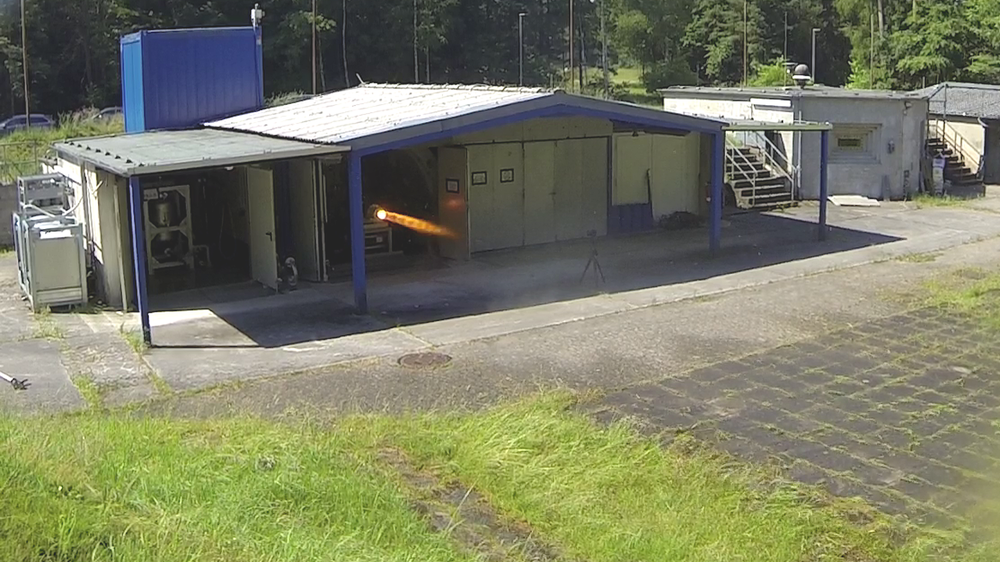Engine test facility - "Viererblock"
The engine test facility, also called "Viererblock", is located at the heart of the DLR Trauen site. This facility was built in 1961 together with other test benches and laboratories for researching rocket engines with solid propellants, monergol engines and hypergolic ignitable propellant mixtures and was used for engine tests in the context of the development of the European "Europa-1" rocket, among other things. The engine test facility consists of four test cells for carrying out horizontal engine tests as well as a centrally located control and steering bunker for the safe accommodation of personnel and measuring equipment during a test run. The cells themselves are cylindrical in design, which ensures optimum structural load distribution in the event of an irregular test run and enables comparatively quick repair in the event of damage. Two test cells were designed for engine tests with liquid propellants up to a thrust class of 150 kilonewton and are each supplemented by a supply and storage room for liquid propellants. The other two test cells were designed for tests with solid propellant engines with a propellant mass of up to 300 kilogram. The entire plant complex is surrounded by a protective wall approx. 2.5 metres high in order to limit possible damage events to the area of the plant itself.

The engine test facility is currently being used for tests with solid fuel and hybrid engines. Since 2012, one of the liquid cells, including the associated tank room, has been equipped with highly concentrated hydrogen peroxide as an oxidiser by the Institute of Aerodynamics and Flow Technology for the operation of hybrid engines up to a thrust class of 15 kilonewton. The remaining cells are used by various internal and external clients, including universities and colleges in the context of DLR's STERN student project, for tests with solid-fuel and hybrid engines.
In order to establish the test complex for future engine projects in the context of "Responsive Space" and as a research facility for industrial engine developments, a comprehensive modernisation of the test facility was initiated. In addition to the general maintenance and modernisation of all system components and the measurement technology, the operational capacity of the solid propellant cells for solid propellant rocket engines with a propellant mass of up to 1000 kilogram and a thrust of up to 300 kilonewton is to be increased. Among other things, the protective wall will be raised further, an automatic fire protection and suppression system will be installed and the control bunker will be equipped with an independent air supply. In the future, movable antechamber roofs will allow the multidimensional signature measurement of rocket engines, for example. A suitable design of the cell apron, in conjunction with the planned chemical analysis laboratory in the caster, will offer the potential to test modern exhaust gas treatment systems for large test benches in order to be able to meet all environmental protection requirements in the future. The necessary construction work will begin soon, so that the test facility in its modernised configuration is expected to be ready for operation in 2026.
